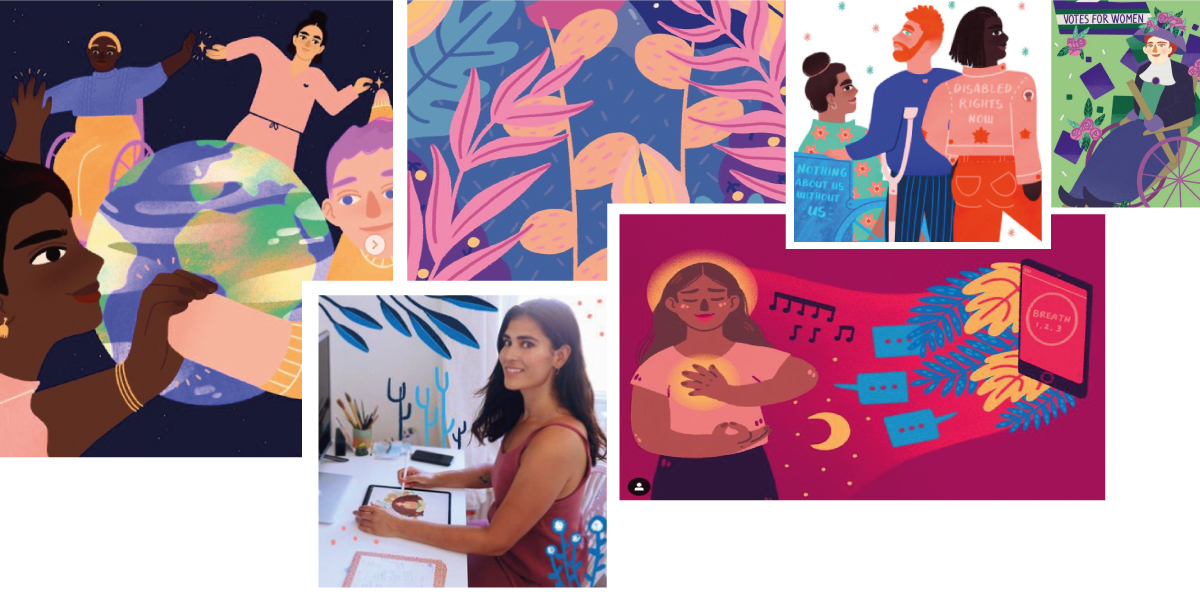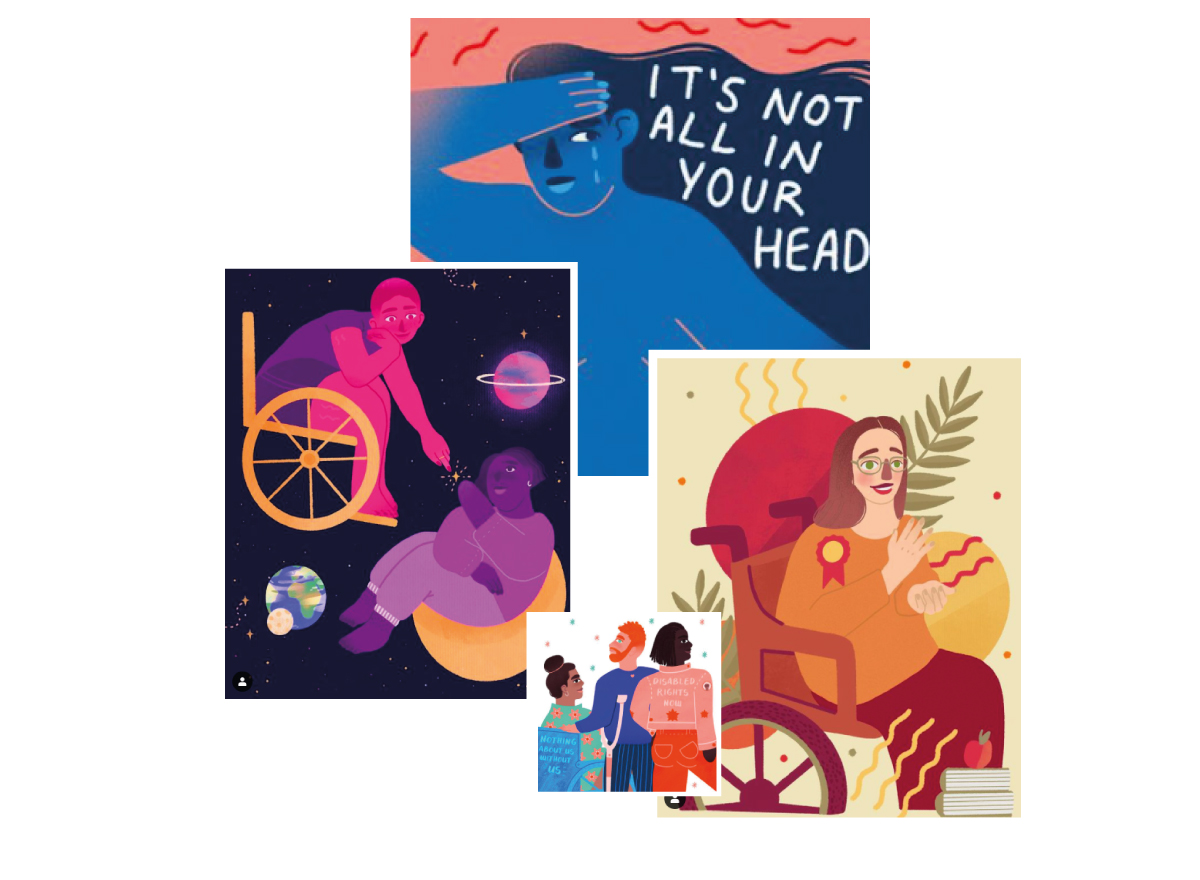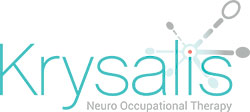The lived experience of brain injury and chronic illness vividly depicted on Human Rights Day by celebrated UK artist, Ananya Rao Middleton

If you find yourself gazing, eyes wide with wonder, at Ananya Rao Middleton’s vivid artwork, you are far from alone.
The United Nations, UK Parliament, the BBC and the Tate Modern are among the many mesmerised by the talent and imagination of the brain injury survivor and chronic illness activist.
But on Human Rights Day 2020, after a year in which vulnerable people worldwide have been forced into lockdown by Covid-19, Ananya’s paintings take on extra significance.
For they are all about the people who customarily live in lockdown, regardless of a pandemic; those whose ‘invisible’ yet chronic illnesses and disabilities are regularly overlooked.
People like Ananya herself.
Here, the 28-year-old talks about her art and life goals as we raise awareness of this year’s Human Rights Day theme: ‘Recover Better – Stand Up for Human Rights’.

An academic high-flyer, Ananya Rao Middleton has a BA in History and Anthropology and an MPhil in Modern South Asian Studies.
But while taking a break from academia, her life “trajectories” changed forever.
Working as a qualitative researcher for an insights agency, she sustained a mild traumatic brain injury (TBI) during a collision at a karting track during a team trip.
“As a result of the injury, I developed post-concussive syndrome (PCS) and had to take 6 months off work. I had terrible fatigue,” she explained.
“One of the other symptoms was light sensitivity so I couldn’t use my laptop or my phone. I was basically lying on the sofa because I was also experiencing vertigo.”
A few months after her accident and frustrated by professional advice to “rest until the symptoms disappeared”, Ananya sought private treatment from a concussion specialist who sent her for an MRI scan.
The results were far from what she expected.
 The scan showed I had lesions on my brain, which the concussion specialist thought could be signs of multiple sclerosis. I was advised to see a neurologist as soon as possible.
The scan showed I had lesions on my brain, which the concussion specialist thought could be signs of multiple sclerosis. I was advised to see a neurologist as soon as possible. 
Ananya followed the guidance and by October 2019, after a second scan, was confirmed as having relapsing-remitting MS, in which symptoms flare up and ease off repeatedly over time.
“There is no history of MS in my family. It was thought the brain injury might have triggered an autoimmune response,” Ananya said.
“But five years before the accident, I’d been experiencing random bouts of dizziness, which could have actually been an early MS symptom.”
Regardless, Ananya soon found herself frustrated by some of the responses she received from people – including medical professionals – when faced with her health conditions.
 In the UK, I found that some approaches to TBI are still very linear and old school with the advice being ‘just go home and rest’ rather than ‘you need a team of specialists’ because it’s your brain, right?
In the UK, I found that some approaches to TBI are still very linear and old school with the advice being ‘just go home and rest’ rather than ‘you need a team of specialists’ because it’s your brain, right? 
“There’s a lot of overlap in treatment, with MS now being treated in the same way as TBI. Still, though, a lot of GPs and neurologists, once you’re diagnosed with MS, say there’s nothing you can do. You are just going to get worse and worse until you are completely bedridden.
“Yet a lot of cutting-edge science is saying otherwise.”
Faced with scant advice on how to manage her symptoms, Ananya drew on her research skills to develop her own plan of attack.
“Science is showing there are lots we can do within our own control to get better outcomes through lifestyle and diet choices. I’ve really jumped on that, and I think that’s made a big difference.
“And I’ve been lucky with my neurologist. He’s open-minded.
“I suggested to him; I don’t want to be on medication. I know what I want to do in terms of managing this with lifestyle, fitness and diet, and he was ok with that. He said if I want medication later to go back to him.”
But it was a childhood passion that proved the first paving stone in Ananya’s self-styled rehabilitation pathway.
“If there’s anything I can be grateful for in terms of my brain injury, it’s that it reunited me with my passion for art and illustrating,” she said.
“From a very early age, I picked up the pen and pencil really quickly. I remember my parents having to get more and more sketchbooks. Every birthday, it was, ‘Here’s another sketchbook, Ananya!’

“But like a lot of people when they’re younger, I doubted myself a whole lot. In school, I didn’t really believe I could become an artist or an illustrator, so I didn’t pursue it at university.
“After my injury, though, when I couldn’t work, I thought, why not paint? So, I got a really cheap watercolour set and just started painting with watercolours.
“I really enjoyed it. It allowed me to meditate almost, I think, and take my mind off my symptoms.
“It’s really hard not to constantly self-monitor when you want to understand what’s happening to you.”
Ananya started by painting dinosaurs – another of her passions – but was soon adding some of the other things she loves.
“I hadn’t really been able to go outside to do anything for a long time and yet I’m very active; I do a lot of martial arts so, because I missed all of that, I was really interested in drawing some vibrant backgrounds.
“I began drawing a lot of tropical plants and, since I really like drawing women too, it turned out to be an assortment of dinosaurs, women and tropical plants!”

As word of her work spread through exhibitions and online, Ananya has been able to turn her art to further her own and others’ aims towards a fairer society.
Her designs have dazzled in campaigns including the BBC’s Body Positive, Parliament’s Disability History Month and the United Nations’ International Day for People with Disabilities.
But it’s through her latest work that her own high hopes shine.
“What I’m trying to do at the moment is link my own experiences as someone with chronic illnesses with the illustration work I put out into the world. That’s where my activism is centred at the moment.
 I’ve had some bad experiences. For me, the main ones are, ‘oh, you look normal, you look healthy’ or ‘I’m so jealous that you got to take time off work; that must have been really nice’.
I’ve had some bad experiences. For me, the main ones are, ‘oh, you look normal, you look healthy’ or ‘I’m so jealous that you got to take time off work; that must have been really nice’. 
“And I think, yeah sure, being dizzy for five months and not being able to do anything or see your friends is really nice and not being paid either.
“People don’t really understand that – even some doctors!”
Ananya owes a lot of her rehabilitation progress to other members of the TBI community who she described as “just wonderful” in sharing lifestyle tips and support.
Through trial and error, she’s now compiled several strategies to help manage her symptoms and maintain a “highly functioning” state.
“A lot of it has to do with understanding how to optimize cell health. I’ve been doing a lot of research into basic science around this and what kind of role this plays in illness and inflammation.
“I know that with lingering TBI symptoms, for me, remedies lie in creating more neuroplasticity and getting my brain’s ability to function back to what it used to be.
“Finding time to paint around work hours, for example, was becoming too tiring so I work digitally mostly now.
“But if I’m online a lot, I can feel my eyes start to smart, and I tend to get nerve pain and then headaches, so I have to check in with myself and make sure I’m regularly breaking.
“I’m trying to build up my illustration work with the idea that I’ll be able to do it full time but some people, when they commission you, need it asap, so I have to explain I have a disability, I need a bit more time. That can be tough.
“I definitely want to see an industry that’s more accommodating of people with disabilities who want to create things. There are so many barriers currently.”
More of Ananya’s artwork can be found here:
- Web: ananyapaints.com
- Etsy: ananyapaints.etsy
- Instagram: @ananyapaints
- Twitter: @ananyapaints
- Facebook: /ananyaraomiddleton
A free downloadable copy of a children’s book illustrated by Ananya to mark Disability History Month here: learning.parliament.UK - illustrated book.
Further reading
We are passionate about occupational therapy and neurological rehabilitation. ‘Talking heads’ is a means of bringing together individuals and professionals interested in brain injury. The blogs, stories, films, current research and news items aim to inform and spark moments of inspiration, reflections and points of discussion...
Neuroplasticity - The brain can rewire itself!
Expert stress and anxiety advice for brain injury survivors during the covid 19- pandemic
Treating yourself with compassion - Part one
Treating yourself with compassion - Part two

